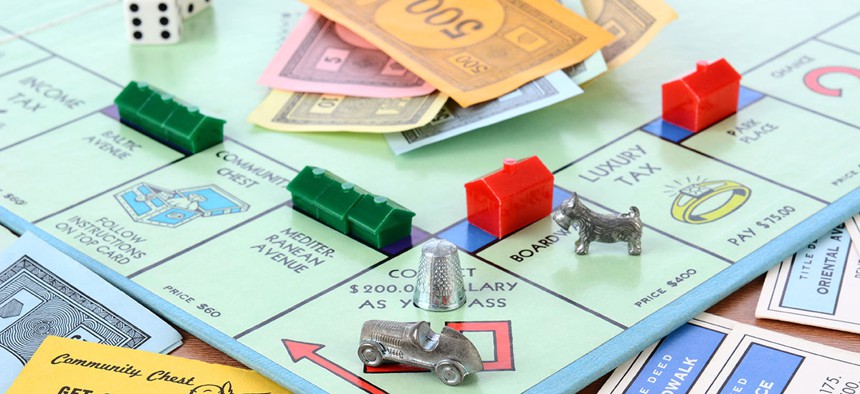Gamification Technology Continues to Evolve in Government

LunaseeStudios/Shutterstock.com
A good gamification project can enable agencies to tap into a hugely powerful problem-solving resource.
John Breeden II is an award-winning journalist and reviewer with over 20 years of experience covering technology and government. He is currently the CEO of the Tech Writers Bureau, a group that creates technological thought leadership content for organizations of all sizes. Twitter: @LabGuys
It’s no secret to anyone who knows me that I love to play games, especially video games and other interactive experiences with the ability to engage people, tell stories and even teach in ways no other medium can match. A growing subset of gaming is gamification, a technology that uses many of the elements within games to create an actual educational-type experience.
A gamification project is not always actually a game, though much of the time it is. Instead, a gamification project uses game elements – the things that make games fun to play – to prove a point, tell a story or educate.
» Get the best federal technology news and ideas delivered right to your inbox. Sign up here.
Those elements are normally categorized into one of four main pillars: exploration, competition, rewards and socialization. A gamification project, like an actual game, can include just one or even all four of the elements.
The poster child for gamification over the past five years is probably the Foldit project developed by the University of Washington's Center for Game Science and the Department of Biochemistry.
In Foldit, players compete by trying to fold the structures of proteins as efficiently as possible using the tools within the game. The highest scores are then evaluated by researchers to see if they hold the solutions to real life problems.
And they often do. Early on, FoldIt players mapped out a key enzyme in the fight against HIV in just three weeks – a mystery that might have taken a decade or more, or possibly remained unsolved, without the game.
Today, new Foldit puzzles are introduced on a regular basis, and help to solve problems in fields ranging from new drug creation to biofuel production.
Quite a few gamification projects like Foldit get their start in universities, though the government has experimented directly with gamification as well.
Much of the direct involvement in gamification at the federal level has come from NASA and the National Oceanic and Atmospheric Administration, which makes sense given both agencies need to maintain a good public presence to help when budget times roll around. NASA even went so far as to take gamification all the way into pure gaming with the creation of its Moonbase Alpha title, which has garnered much critical acclaim.
A few government agencies are even using gamification internally to solve complex problems or help with collaboration. The National Geospatial-Intelligence Agency has made much of its internally-developed gamification software available for free on GitHub for any other agency to incorporate. That software, among other things, can help to configure a rewards server so participants in government gamification projects can fairly earn badges and other accolades for contributing.
But perhaps the best example, and one of the least known, of the government gamification tools is the Navy’s MMOWGLI, the Massive Multiplayer Online Wargame Leveraging the Internet. The Navy uses MMOWGLI to address issues ranging from maritime piracy to the use of shipboard 3-D printing.
MMOWGLI incorporates three of the four main gamification pillars: competition, rewards and socialization. How it works is that a major problem is presented to players, like the most recent game that tried to help the Navy figure out better ways to recruit members of Generation Y into its ranks.
Players present ideas at the first phase of the game, which are turned into what the system calls “cards.” Other players comment on the cards and group similar ideas into card chains. Points are awarded for players who contribute or create the cards with the most influence, with a leaderboard keeping track of the most popular cards and the highest-scoring players.
Those who contribute to the most interesting ideas are then invited to work on an action plan that fleshes out the details of how such an idea could actually be implemented, and earn more points for their efforts.
Because the participants are not known beyond their player identities, anyone with a good idea can influence a game. Stripping away things like rank or educational degrees means the focus of each MMOWGLI game is the ideas themselves, regardless of their source.
According to the General Services Administration's DigitalGov publication, MMOWGLI has helped the Navy find some interesting solutions to big problems that probably would not have come to light using the normally rigid military command structure.
Game playing has never been more popular, with the latest survey from the Entertainment Software Association trade group showing 155 million Americans, (or 42 percent of the population) playing video games for at least three hours a week.
And as more people begin playing games and becoming familiar with the pillars of gaming, gamification projects will also pick up more players. Government agencies should make sure to stay on point with this trend. A good gamification project can enable them to tap into a hugely powerful problem-solving resource, all for the low cost of providing a little bit of fun for their players.






